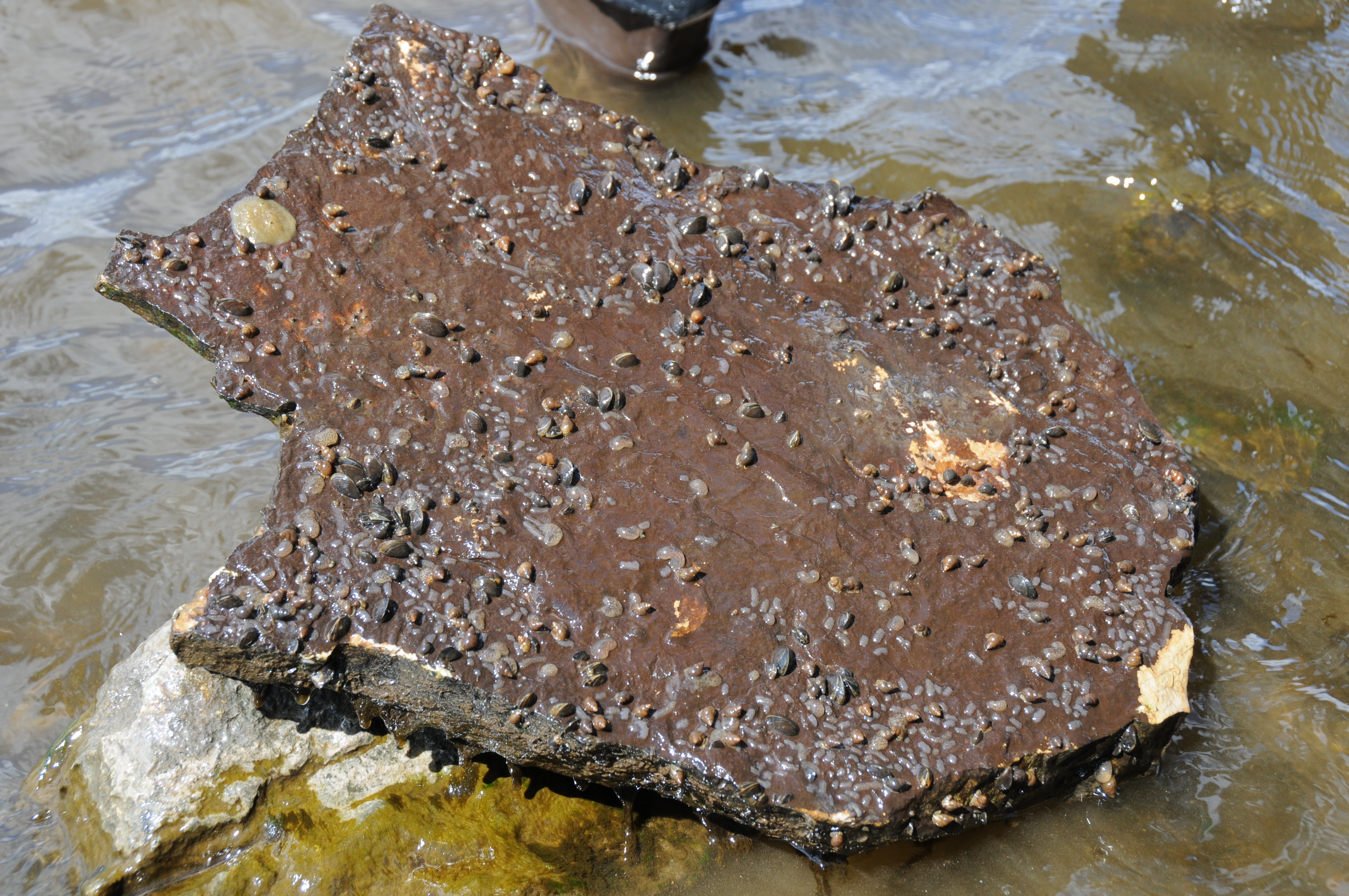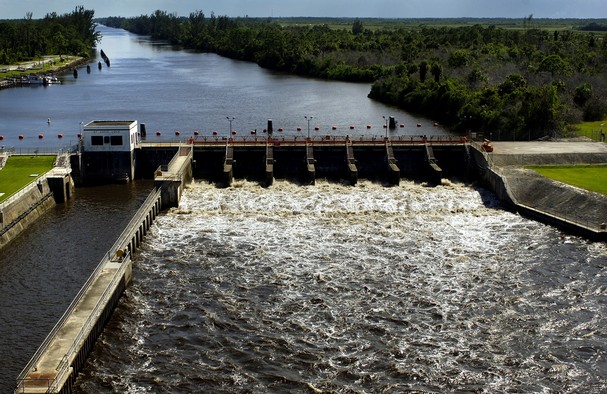Habitat
Being a parasite, Cyathocotyle bushiensis
depends on a number of hosts in order to live. This being
the case, it is found in fresh water areas because its first and
second intermediate hosts are a fresh water snail, Bithynia
tentaculata. This is the host it will be found in when the
difinitive host, waterfowl birds, are migrating. The numbers of
C. bushiensis found in these areas and in other fresh
water areas depend on four different factors (Hermann &
Sorensen, 2009). These include:
1. The different behaviors seen in the host depending on the
season and how many of them are located in the area at that time
of year.
2. The life history and number of B. tentaculata
found in the area
3. The changes that occur in the temperature during the
different seasons
4. The number of hosts exposed to the snails carrying the
infective stage of the trematode.

B. tentaculata shown above on a rock. Taken by: Roger Haro.
September is when the sporocyst stage of C. bushiensis is at its peak and it begins to rise during August. The metacercariae stage also begins to rise during August and rises again during October, but remains at its lowest in June (Hermann & Sorensen, 2009). These common trends are limited to the Lower Great Lakes, St. Lawrence River drainage system, and the mid-Atlantic area of the United States because that is where B. tentaculata is found (Hoeve & Scott, 1988).

This picture of a lock and dam in La Crosse, Wisconsin is one of the areas
B. tentaculata is found as well.
To view other interesting facts about C. bushiensis please use the link Facts or other links on the left side of the page.